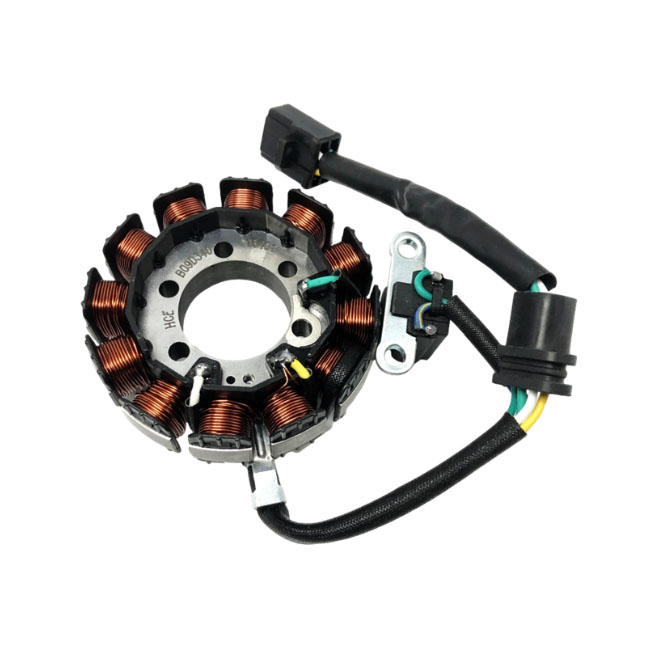


Contact Tianjin Tongrunfeng Trade Co,. Ltd. for all your Motorcycle Stator Coil needs. We specialize in providing high-quality motorcycle spare parts at competitive prices. You can visit our website at https://www.trfauto.com or email us at sale@tongrunfeng.com.
1. Kothari, A., & Patel, H. (2013). Comparative Study of Various Types of Stator Winding Fault Analysis of an Induction Motor. International Journal of Advanced Research in Electrical, Electronics and Instrumentation Engineering, 2(5), 1846-1852.
2. Singh, K., & Chauhan, M. (2015). Dynamic model and simulation of a single-phase induction motor with stator winding faults. COMPEL - The international Journal for Computation and Mathematics in Electrical and Electronic Engineering, 34(1), 235-247.
3. Umanand, L., & Ranganathan, V. (2001). An Investigation into the Performance of a Three-Phase Induction Motor with Multiple Single-Phasing of Stator Phases. IEEE Transactions on Energy Conversion, 16(4), 343-349.
4. Gupta, P., & Rangnekar, S. (2007). Diagnosis of Stator Winding Faults in Three Phase Squirrel Cage Induction Motor using MCSA and Fuzzy Logic. IEEE International Conference on Industrial Technology, 2007. ICIT 2007, 2715-2720.
5. Bhardwaj, M., & Arora, A. (2018). Detection of Different Types of Stator Winding Faults in Induction Motor. International Journal of Control Theory and Applications, 11(45), 167-180.
6. Gao, X., Luo, J., Song, L., & Zhang, Y. (2019). Fault Diagnosis of Stator Winding Turn-to-Turn Short-Circuit in Switched Reluctance Motor Based on Dynamic Math Model and AEPV-EMD Method. IEEE Access, 7, 125216-125231.
7. Rahman, M. A., & Azim, M. F. (2013). Study of Stator Winding Fault Detection and Classification in Three-Phase Induction Motor Using ANN. European Journal of Electrical and Computer Engineering, 17(4), 127-140.
8. Suryawanshi, H. M., & Dandekar, A. S. (2016). Fault Detection of Stator Winding in Induction Motor Using Current FFT Analysis. International Journal of Advance Research in Electrical, Electronics and Instrumentation Engineering, 5(1S), 170-174.
9. Mohanty, A. R., Tripathy, S. C., & Rath, R. K. (2004). Current Signature Analysis of Cage Induction Motor Stator Windings Under Balanced and Unbalanced Voltage Supply Conditions. IEEE Transactions on Industrial Electronics, 51(1), 192-198.
10. Massoud, A. M., & Abdel-Khalik, A. S. (2005). An Analytical Stator-Winding Induction-Motor Model accounting for Core-Saturation Effects. IEEE Transactions on Energy Conversion, 20(3), 627-633.